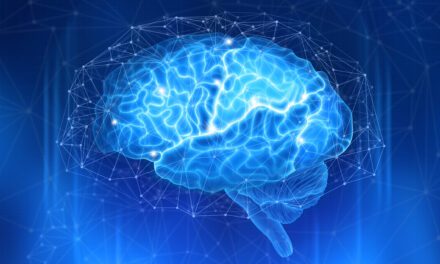Evidence from past epidemics and preclinical research suggests that the COVID-19 pandemic may have a long-lasting impact on the pandemic of Parkinson’s disease, scientists write in the Journal of Parkinson’s Disease.
In the study, scientists discuss several avenues through which the COVID-19 pandemic might contribute to the expected exponential growth of PD in the coming years, compounding the economic and societal impacts of the disease.
The potential long-term neurological manifestations of COVID-19 infection are unknown. However, clinical symptoms like the loss of smell and taste and encephalitis suggest that the SARS-CoV-2 virus might have the ability to invade the central nervous system.
“The interesting aspect of the olfactory pathway hypothesis for SARS-CoV-2 neuroinvasion is the potential presence of the virus in the brainstem, which contains the respiratory nuclei responsible for breathing rhythm,” explains senior author Carla Alessandra Scorza, PhD, Discipline of Neuroscience, Department of Neurology and Neurosurgery, Federal University of São Paulo/Paulista Medical School, São Paulo, Brazil, in a media release from IOS Press.
She cites studies that found patients with the severe form of COVID-19 infection were more likely to develop acute cerebrovascular disease, as well as studies that found evidence of encephalopathy and intracerebral hemorrhage on brain scans of patients with the infection.
Early evidence of a potential link between viruses and PD stems from an epidemic of encephalitis lethargica following the 1918 influenza outbreak. Scorza notes that while the evidence linking that influenza outbreak to PD pathogenesis was correlational, it led to further investigations. Some of the primary motor symptoms and histological features of PD have been associated with the H1N1 influenza virus and other viruses such as Coxsackie virus, West Nile virus, Japanese encephalitis B, and HIV.
While the authors acknowledge that further research is needed to understand the role of viruses in the pathogenesis of PD, they believe the findings suggest that both neurotropic and non-neurotropic viruses may contribute to the initiation of PD, either directly by the physical presence of the virus in the central nervous system, or indirectly, by inducing a long-lasting inflammatory process in the brain.
Given that studies have found SARS-CoV-2 may induce the severe immune reaction known as a cytokine storm and hyperinflammation in patients with severe COVID-19 infection, is it possible, the authors hypothesize, that the infection could be a triggering event of the neurodegenerative cascade underlying PD? In addition, previous in vitro studies found that other human coronaviruses may remain latent in blood cells and thus, could induce central nervous system infections later. While clinical signs of Parkinsonism and PD have not been associated with previous coronavirus outbreaks, coronavirus antibodies have been detected in cerebrospinal fluid samples in persons with PD, the release explains.
The scientists also speculate whether COVID-19 survivors may represent a disproportionately large fraction of the future PD patient population, leading to greater societal impacts. Although the evidence is still inconclusive, persons who were born or were young at the time of the 1918 influenza outbreak had a two- to three-fold higher risk of developing PD than those born prior to1888 or after 1924.
Noting that PD is already the fastest growing neurological disorder, sustained by a continuously aging population, Daniella Balduino Victorino, the study’s lead author, warns that, “As other global pandemics in the past, the COVID-19 pandemic will likely last for a limited amount of time. Yet, it is about time we recognize that the pandemic of PD is not going away anytime soon.
“All the cutting-edge science seeking viable vaccines and therapies against SARS-CoV-2/COVID-19 infection has only been made possible thanks to a tremendous amount of early scientific endeavors. Last year, while the NIH allocated more than U$6 billion on infectious diseases research, less than US$300 million was spent on PD research. PD breakthroughs heavily depend on devoting more resources to advancing this field of research.”
[Source(s): IOS Press, EurekAlert]





